
Located in the Southern Africa Sub-region, Zambia is a landlocked country covering an area of 752,614 km2. It is bordered by Tanzania (in the North), Malawi (in the East), Mozambique (in the South-East), Zimbabwe (in the South), Botswana and Namibia (in the South-West), Angola (in the West) and the Democratic Republic of Congo (in the North-West).
The country has an estimated population of 12.2 million people and its annual population growth rate is estimated at 3.1 percent. About 46% of the population representing an active and productive workforce are between 15 and 64 years of age. The population comprises approximately 72 ethnic groups, most of which are Bantu-speaking. Zambia also has a small but economically important Asian population, most of whom are Indians. The predominant and official national religion is Christianity.
The climate of Zambia is tropical modified by elevation. Most of the country is classified as humid subtropical or tropical wet and dry, with small stretches of semi-arid steppe climate in the south-west and along the Zambezi valley. There are two main seasons, the rainy season (November to April) corresponding to summer, and the dry season (May/June to October/November), corresponding to winter. The average monthly temperatures remain above 20°C (68°F) over most of the country for eight or more months of the year.
Politics:
Zambia is a multi-party democratic country with a distinct separation of powers between the legislative (parliament), executive (cabinet) and judiciary (courts of law) organs of Government govern Zambia. Both the president (who must belong to a registered political party) and members of parliament are elected by the people. The president appoints cabinet ministers, from within elected and nominated members of parliament. The parliament, headed by the Speaker of the National Assembly, comprises 150 elected members and up to 8 members nominated by the president. The Supreme Court is the highest court of appeal and is headed by the Chief Justice.
It has been a multi-party state since 1991, when Kenneth Kaunda fell from power after serving as president for 27 years. The president is elected by popular vote for a five-year term and is eligible for a second term. The current President of Zambia is Rupiah Banda, who took over after the death of president Levy Mwanawasa in August 2008. The main political parties are the Movement for a Multiparty Democracy, Patriotic Front, and United Democratic Alliance.
Economy:
Zambia’s economy has historically been based on the copper mining industry and it is currently experimenting an economic diversification. The country experienced positive economic growth for the ninth consecutive year in 2008 with a real growth rate of 5.8 percent to a gross domestic product (GDP) of USD 15.2 billion. At the end of 2009, the government announced a GDP growth by over six percent, while the IMF expected GDP growth to be about 5.3 percent.
The positive growth has been driven mainly by increased agricultural production, new investments and increased exports from the mining sector, increased performance of the manufacturing sector, particularly agro-processing industries and growth in tourism.
Since the early 1990s, Zambia has pursued market oriented policies, with the country becoming increasingly integrated in the global economy. This has been done through the privatization of state enterprises, removal of unnecessary controls, deregulation of interest and foreign exchange rates, reduction of tariffs, strengthening of the financial sector, and reforms on policies of repatriation of tax profits, dividends and capital. Zambia’s economy is on track and has been expanding since 2002. The government’s target is to reach a 7% annual economic growth rate and to reduce inflation down to 7%. The government has deliberate ongoing processes of improving the investment climate for doing business and promotion of exports.
Trade
Barriers to trade have been substantially reduced, export licenses are mere a formality, while import controls are maintained solely for statistical purposes. The main trade policy instrument is done through customs duties, which have even been reduced to support private sector growth and export competitiveness. In addition, a number of incentives have been introduced to develop export industries. The Zambia Revenue Authority is responsible for the administration of customs duties while commercial banks issue export and import licenses.
Zambia’s main export products are copper and cobalt. The country also has a number of non-traditional exports including articles, ores, slag and ash, sugar and sugar confectionary, dairy products, bird’s eggs, natural honey, edible products, copper wire and electricity. The non-traditional exports have become of increasing importance to the Zambia economy as the country strives to diversify from its dependence on copper and cobalt, increasing by 9.2 percent between 2006 and 2007 and by 12.2 percent between 2007 and 2008. Major imports include crude oil, mining equipment, machinery, iron steel, vehicles, and transport equipment
Zambia’s exports totaled around $4.4 billion in 2009. The primary exports include copper and cobalt, electricity, tobacco, flowers, and cotton. As of 2008, its primary export partners were China (13.8%), South Africa (8.2%), Democratic Republic of the Congo (7.8%), Saudi Arabia (7.6%), South Korea (7.6%), Egypt (7.4%), Italy (6.7%), and India (4.6%).
Zambia’s export market is buoyed by the country’s membership in regional organizations such as the Common Market for Eastern and Southern Africa (COMESA) and the Southern Africa Development Community (SADC). Zambia’s participation in international trade has also boosted the country’s competitiveness in global trade. Currently the European Union countries, China, South Africa, Democratic Republic of Congo, Kuwait, United Arab Emirates, India, Japan and the USA remain Zambia’s major trading partners. Although Zambia is a landlocked country, it has easy access to the sea ports of Durban in South Africa, Dar-es-salaam in Tanzania and Walvis Bay in Namibia.
Investment
Zambia’s stable macroeconomic stability, a conducive and enabling environment for private sector and industrial growth, political stability, peace and tranquility are the hallmark for the country’s positive investment climate. According to the 2009 World Bank’s Doing Business Report, Zambia is among the best seven (7) African countries in doing business. The cost of doing business has been reduced significantly while the country has one of the most open economies on the continent.
Investment opportunities exist via privatization of textile mills, collieries, services, and fertilizer and chemicals manufacturing. Zambia also has opportunities for investment in the agro-industry (horti-floriculture, tobacco-processing, cotton-ginning, crop production for the processing industries); in industry (consumer goods); and in tourism (quality holiday accommodation, managed safaris, licensed hunting safaris and organized holidays in white-water rafting and other adventure /adrenaline sports).
Investment Framework:
The Zambian Government actively seeks foreign investment through the Zambia Development Agency (ZDA), which was established in January 2007, by consolidating a number of trade and investment promotion entities into a one-stop resource for international investors interested in investing in Zambia. The ZDA board screens all investments for which incentives are requested and usually makes its decision within 30 days.
There is no distinction in Zambian law between foreign and domestic investors. Investors are free to invest in any sector of the economy and are entitled to incentives per the ZDA Act of 2006. In the privatization process, foreign investors are eligible to bid on state-owned companies. Non-Zambians may also invest in the Lusaka Stock Exchange without restriction and on terms comparable to those Zambians receive. Companies seeking licenses or concessions or investors bidding for privatized companies are encouraged to seek local partners. It is not clear how such commitments are weighed when decisions are made by the Zambia Development Agency.
The Zambia Development Agency itself has been set up for promotion of investment and trade support. To attract investors, Zambia offers a package of investment incentives, some of which are sector-specific. In addition the tax regime is investor friendly with no capital gains tax, but property transfer tax is applicable on the transfer of immovable property and on stocks and shares in Zambian incorporated companies. Investors are recommended to consult about the latest development with regard to the Citizens Economic Empowerment initiative, which encourage the meaningful participation of citizens in companies. The CEE will affect the way of doing business in Zambia.
Specific investment opportunities exist in the following areas:
Agriculture
Zambia has very good arable land for both extensive and intensive cultivation of various crops. Some 56% of Zambia’s total land area is available for agricultural production and only about one sixth of total arable land is under cultivation mostly by small-scale farmers. Much of the available land for agriculture is near urban areas which are close to transport links for accessing local and international markets. Water is in abundance, with some 45% of Southern Africa’s water resources found in Zambia. Untapped potential also exists in the irrigation of farmland. Good rainfall, conducive temperature, rich soils, and abundant sunshine make agriculture a very attractive sector for investment in Zambia. Special incentives also exist for those intending to invest in this sector. Investment prospects abound in the growing of wheat, sugar, coffee, cotton, tobacco, vegetables, flowers and maize as well as livestock (such as cattle, poultry, sheep, pigs), dairy farming and fisheries. Fertilizer and farm equipment supply and production also have significant potential.
Mining
Zambia has vast mineral reserves with an estimated 10% of the world’s known reserves of copper which is exported to China, USA, UK, Japan, Italy, India, Thailand and some other EU and Asian countries. Around the world copper is used for electrical wiring, computer chips, in plumbing, heating and cooling facilities, and in automobiles. Zambia is one of the world’s largest cobalt producers, supplying 20% of the world’s cobalt. Copper and cobalt together represent 80% of Zambia’s export earnings, and contribute over 10% to the country’s Gross Domestic Product. In addition to huge copper and cobalt reserves, Zambia possesses a variety of lead, zinc and precious and semi-precious minerals, such as emeralds, amethyst, aquamarine, diamonds and gold. Deposits of marble, granite, ferrous metals, clay, limestone, iron and phosphate also remain underexploited. Large-scale mining is widespread, with existing prospecting licences and new applications being issued. World-renowned mining companies from Canada, Australia, China, UK, South Africa and USA are involved in mining and prospecting operations in Zambia.
Energy
With its vast water resources and coal reserves, Zambia offers abundant investment opportunities for hydroelectric power generation, supply and distribution. Investment in the energy sector has been slow and existing power generation does not match with current demand as a result of increased mining activities on the Copperbelt Province in recent years. The problem has been aggravated by the ongoing costly rehabilitation of existing power plants. Currently, the country’s hydropower resource potential stands at an estimated 6,000 Mega Watts (MW) while current production is only 1,786 MW resulting in a very big shortfall. With this deficit in power generation, the country requires massive investment in the energy sector. The Zambian government is, therefore, looking for serious partners and companies which are ready to invest in this sector.
Manufacturing
Manufacturing is one of the top performers and a priority growth sector in the Zambian economy and contributes about 11% to the national Gross Domestic Product and 10% to employment. Manufacturing in Zambia is one of the most attractive sectors for investment as it has all the vital required elements in place such as raw materials, required labour force, abundant land and a good banking and financial system. Measures have been put in place to support growth within the sector including the creation of Multi-facility Economic Zones (MFEZs), credit provision and industrial skills training. Potential areas of investment include cement production, textiles and clothing apparels, agro-processing, processed and refined foods, leather products, wood processing, plastics, vehicle parts and assembly, chemicals, refining of petroleum, and metal and engineering works. There is exemption on customs duty on the importation of most capital machinery and equipment used for manufacturing while many other incentives exist for the sector.
Tourism
The tourism sector is one of the largest exchange foreign exchange earners in Zambia and is a major source of economic growth. Zambia is one of Africa’s top tourist destinations in Africa and as such investment opportunities exist in tourism facilities such as hotels, lodges, and safari operations. Untapped tourism investment opportunities also exist in all the 19 National parks and 34 game areas as well as the 23 million hectares devoted to the conservation of an amazing variety of animals. Business opportunities further exist in the tourism transport such as air charters, car hire, travel agencies and tour operations management, sports, game ranching, adventure holiday packages, and organized tours. The opportunities in this sector are immense and this is certainly what the ZITE event is showing as the only tourism marketing event that brings together the best of local and regional tourism products and services whilst attracting international visitors and buyers. Please visit http://africastzambia.com/services/zambia-international-travel-expo
Physical Infrastructure
Potential investment opportunities in physical infrastructure such as housing, roads, and communications abound. The construction sector in Zambia is rapidly growing mainly due to construction of residential housing, investments in the mines, road construction and other civil works. The country also has a very robust Road Sector Investment Program (ROADSIP) in which both local and international road construction companies participate although emphasis is on quality. The country is also looking for serious investors to venture into the air transport industry to support the ever growing tourism sector and increased commercial activities.
Financial System:
The financial system has been liberalized following the Banking and Financial Services Act of 1994 and 2000 that provides for regulation of the conduct of banking and financial services and safeguards for investors and customers. The central bank is equipped with powers to deal with flouting of prudential and regulatory requirements. Public confidence in the Zambia financial system has grown, as it is seen to be stable, with automated teller machines and computerized services. There are currently nine commercial banks, with four of these being major international banks. The merchant banks also offer project finance, trade finance, syndicated lending and advisory services for new public issues and private placements. The Lusaka Stock Exchange, LUSE, was opened in 1994, and presently 13 companies are listed while 12 are quoted. One of the most successful rights issues was when Zambia Breweries managed to raise US$8.5 million to refinance a loan. There are no restrictions on foreign investments on the LUSE. LUSE applies a code on corporate governance for its listed companies. In 2005, LUSE registered the highest return on investment (125%) of all stock exchanges in Sub-Saharan Africa.
Banking Sector:
Banking supervision and regulation by the Bank of Zambia (BoZ), the central bank, has improved over the past few years. Improvements include revoking licenses of some insolvent banks, denying bailouts, limiting deposit protection, strengthening loan recovery efforts, and upgrading the training and incentives of bank supervisors. On October 1, 2007, the statutory reserve requirement was reduced to 8 percent from 14 percent, injecting additional liquidity into the banking system.
Although some improvements have been registered in recent years, credit to the private sector is expensive and readily available only for low-risk investments. One factor inhibiting lending is a culture of tolerating loan default, which many borrowers view as a minor transgression. In addition, high returns on government securities encourage commercial banks to invest heavily in government debt, to the exclusion of financing productive private sector investments. Banks provide credit denominated in foreign currency only for investments aimed at producing goods for export.
Zambia's largest banks include Zambia National Commercial Bank (Zanaco), Barclays Bank Zambia, Standard Chartered Bank Zambia, and Stanbic Zambia Limited. In 2009, Zanaco accounted for 35 percent of the banking sector's total assets while its deposits accounted for 20 percent of all deposits. Zanaco's loan portfolio accounted for 44 percent of the total loans in the banking sector.
Outlook for 2011
Zambia has not only survived the GFC, but has decidedly come out with flying colors to record its highest GDP growth for decades. The economic management of the country is good as is evidenced by the relatively healthy state of official finances. Inflation is expected to be stable around the 10% mark in year-on-year terms. A few pressures may however be felt from higher oil prices and from exits from short-term Government paper by international investors; this is because of the pressures they will put on fuel prices and the ZMK/USD rate respectively.
The investment market has good opportunities in specific areas. The LuSE has been trading at a discount over the last 18 months and presents a very good buying opportunity. Long dated Government bonds are also offering good real returns. Real estate opportunities are present. But, structural constraints in this market may preclude the realization of good returns in a timely manner. It is not believed that holding “safe currencies” will be value adding in the short-medium term.
On balance, things will be positive in the Zambian economy and its investment market during 2010. As such, exploring opportunities for good returns in different areas of both the economy at large and the investment market specifically should be seen as being a worthwhile exercise.
Related Links:
Republic Of Zambia State House www.statehouse.gov.zm
Zambia Development Agency www.zda.org.zm
Bank of Zambia www.boz.zm
Zambia Tourism Board: www.zambiatourism.com

 Emmanuel RigauxChief Executive Officer & Managing DirectorLaFarge Zambia
Emmanuel RigauxChief Executive Officer & Managing DirectorLaFarge Zambia Michael Hunter-SmithGeneral ManagerBest Western Plus Lusaka Grand Hotel
Michael Hunter-SmithGeneral ManagerBest Western Plus Lusaka Grand Hotel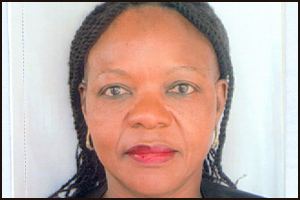 Bertha KalikekaDirectorBIC Zambia
Bertha KalikekaDirectorBIC Zambia Susan MennellManaging DirectorCFAO Zambia
Susan MennellManaging DirectorCFAO Zambia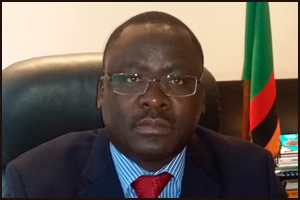 His Excellency Humphrey ChibandaEmbassy of Zambia to FranceGovernment of Zambia
His Excellency Humphrey ChibandaEmbassy of Zambia to FranceGovernment of Zambia Mr. Johan JansenChief Executive OfficerMopani Copper Mines Plc
Mr. Johan JansenChief Executive OfficerMopani Copper Mines Plc Joseph BesaManaging DirectorSAFRICAS Zambia Limited
Joseph BesaManaging DirectorSAFRICAS Zambia Limited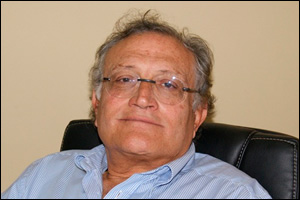 Antonio VentrigliaManaging DirectorZambezi Portland Cement
Antonio VentrigliaManaging DirectorZambezi Portland Cement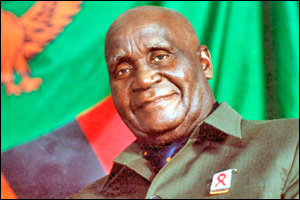 Dr. Kenneth KaundaFounding Father of the Republic of ZambiaN/A
Dr. Kenneth KaundaFounding Father of the Republic of ZambiaN/A Rosetta ChabalaChief Executive OfficerZAMEFA
Rosetta ChabalaChief Executive OfficerZAMEFA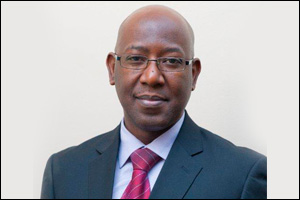 Samson LongweManaging DirectorRealtime Zambia
Samson LongweManaging DirectorRealtime Zambia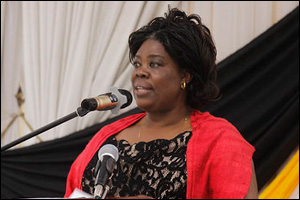 Honorable Jean KapataMinister of Tourism & ArtsMinistry of Tourism & Arts
Honorable Jean KapataMinister of Tourism & ArtsMinistry of Tourism & Arts Mr Jacky HuangGeneral ManagerGood Time Steel Company Zambia Limited
Mr Jacky HuangGeneral ManagerGood Time Steel Company Zambia Limited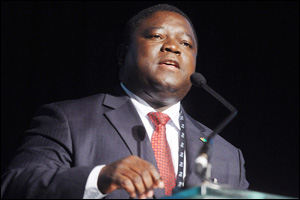 Honorable Yamfwa D. MukangaMinister of Transport, Works, Supply and CommunicationsMinistry Transport, Works, Supply and Communications
Honorable Yamfwa D. MukangaMinister of Transport, Works, Supply and CommunicationsMinistry Transport, Works, Supply and Communications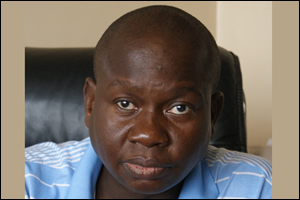 MR. Sibalwa Chimuka MudendaCEOWorldmasters Freight Logistics Limited
MR. Sibalwa Chimuka MudendaCEOWorldmasters Freight Logistics Limited Mr. Chris ChiindaDirectorCee Cee Freight & Suppliers
Mr. Chris ChiindaDirectorCee Cee Freight & Suppliers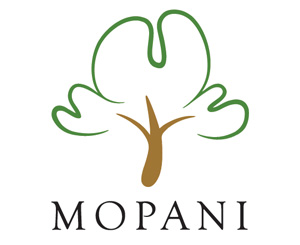 Mopani Copper Mines PlcEnergy & Mining
Mopani Copper Mines PlcEnergy & Mining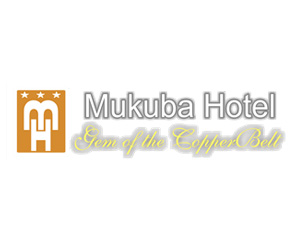 Mukuba HotelTourism and Hospitality
Mukuba HotelTourism and Hospitality Good Time SteelSteel Industry
Good Time SteelSteel Industry City Drive Rent A Car LimitedCar Rental
City Drive Rent A Car LimitedCar Rental BLACK DOTAdvertising Agency
BLACK DOTAdvertising Agency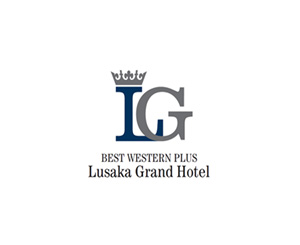 Lusaka Grand Hotel (BEST WESTERN PLUS)Hotels
Lusaka Grand Hotel (BEST WESTERN PLUS)Hotels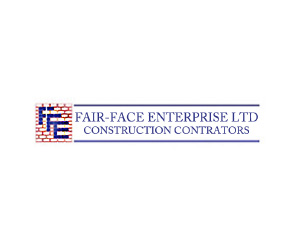 Fair Face Enterprise LimitedConstruction
Fair Face Enterprise LimitedConstruction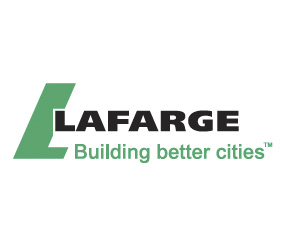 Lafarge CementBuilding materials & construction solutions
Lafarge CementBuilding materials & construction solutions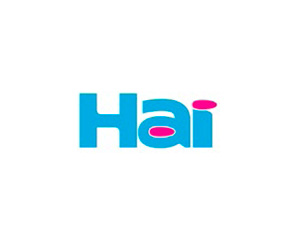 HAI Telecommunications LimitedInformation Technology
HAI Telecommunications LimitedInformation Technology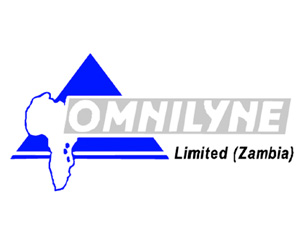 Omnilyne LimitedMining
Omnilyne LimitedMining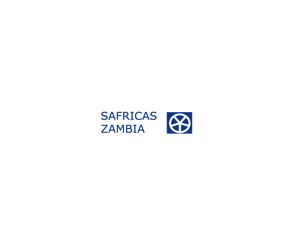 SAFRICAS Zambia LimitedConstruction
SAFRICAS Zambia LimitedConstruction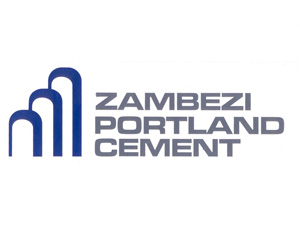 Zambezi Portland CementCement Manufacturer
Zambezi Portland CementCement Manufacturer Shakespeare CourtTourism
Shakespeare CourtTourism Quick Edge LtdIT
Quick Edge LtdIT Chita LodgeAccommodation
Chita LodgeAccommodation Hostels Board of ManagementTourism
Hostels Board of ManagementTourism